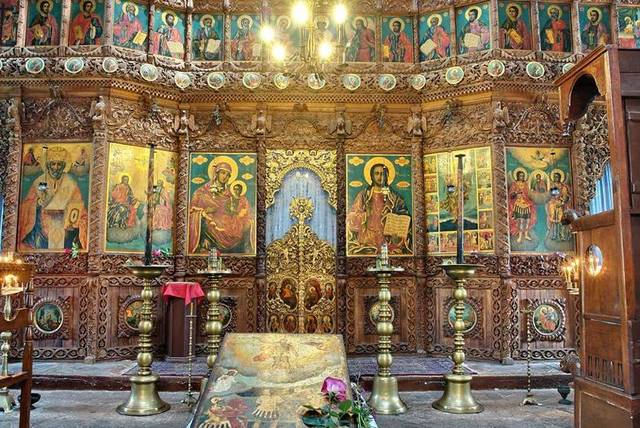Lopushanski monastery "Sv. Yoan Predtecha"
The Lopushanski monastery is located in the Balkan Mountain in the valley of Dalgodelska Ogosta River, between the villages of Pomezhdin, Melyane and Georgi Damyanovo (up to 1958 its name was Lopush). It is located 21 km southwest of Montana, 30 km northwest of Berkovitsa, and respectively 55 km from Vratsa and 105 km from Sofia in the same direction.
History
At the location of the present-day monastery "Sv. Yoan Predtecha" there was another in the past. It is believed that it existed in the 10th century but was located near the village of Pomezhdin in Manastirishte neighbourhood. The monastery was burned to the ground in 1678 and the fire destroyed all the written evidence of its existence.
The people from Lopush donated their land for building a new monastery and because of their gesture, it is known as Lopushanski.
In the period 1850-1853 the monastery was restored by the monks Dionisiy, Gerasim and Gedeon from Chiprovtsi. They built the present church of a cathedral, the residential housing, the yard gates, the fences and garden fountain. The author of all buildings and facilities was master Lilo.
During the Bulgarian revival in the Lopushanski monastery functioned a school, and the cloister was a center of the national liberation and church struggles. The monastery became a favorite place of Ivan Vazov and during his stay there he created some chapters of the novel "Under the Yoke".
In 1989 the Lopushanski monastery was reconstructed. The main merit of this goes to the then Abbot Archimandrite Amvrosiy. In his time raised the new residential building with two beautiful carved verandas.
Architecture
Lopushanski monastery is active and inhabited by confraternity. The complex consists of a church, residential and farm buildings and white stone fountain, all surrounded by a stone wall.
The church architecture resembles that of the Rila Monastery. It is a three-aisled, three-apse building with two conch and two side chapels ("Sv. Kozma i Damyan" and "Sv. Joan Krastitel"). There are three central domes and two domes above the side chapels, all located on an eight-side cylinders.
In the stone construction of the church are carved reliefs with figures of men, animals and individual heads. It is displayed a man with a sword, leaning on a shotgun. The temple is not painted, but has one of the most beautiful altar iconostasis created by the master of the Samokov art school Stoycho Fandakov. In addition to the apostles' images the iconostasis includes eight icons made by Stanislav and Nikola Dospevski.
The residential part of the Lopushanski monastery was built in the spirit of the contemporary monastic architecture. It has two floors with a frame structure. On the first floor there are food units and several guest rooms, while the second floor includes the room of the Abbot, the monastic cells and more guest rooms. In the courtyard can be seen the white stone fountain with three spouts built in 1856.
The Lopushanski Monastery was declared an architectural and artistic monument in 1973. The monastery holiday is on 7th of January - Sv. Joan's Day.
Transport
The monastery can be reached by car on the way from Montana to Chiprovtsi. You should follow the road to the village of Georgi Damyanovo. After the village, in close vicinity of the road is the cloister.
Accommodation
The Lopushanski monastery has 16 guest rooms and a restaurant - cook-house.
On a hill over the village of Gavril Genovo, among an oak forest there is an inn with a restaurant that offers transportation and tours in the area.
Sources: http://svetimesta.com/, http://www.bulgariamonasteries.com/, http://www.lopushanski-monastery.domino.bg/, http://bulgariatravel.org/
Photos: http://www.manastir359.com/, http://div4ovshtini-2.blogspot.com/












